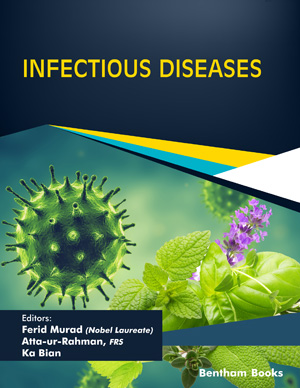
Abstract
Cardiac circadian rhythms are an important regulator of body functions, including cardiac activities and blood pressure. Disturbance of circadian rhythm is known to trigger and aggravate various cardiovascular diseases. Thus, modulating the circadian rhythm can be used as a therapeutic approach to cardiovascular diseases. Through this work, we intend to discuss the current understanding of cardiac circadian rhythms, in terms of quantifiable parameters like BP and HR. We also elaborate on the molecular regulators and the molecular cascades along with their specific genetic aspects involved in modulating circadian rhythms, with specific reference to cardiovascular health and cardiovascular diseases. Along with this, we also presented the latest pharmacogenomic and metabolomics markers involved in chronobiological control of the cardiovascular system along with their possible utility in cardiovascular disease diagnosis and therapeutics. Finally, we reviewed the current expert opinions on chronotherapeutic approaches for utilizing the conventional as well as the new pharmacological molecules for antihypertensive chronotherapy.
Graphical Abstract
[http://dx.doi.org/10.1096/fj.202001706RR] [PMID: 33660366]
[http://dx.doi.org/10.5271/sjweh.410] [PMID: 10360463]
[http://dx.doi.org/10.1016/j.ncl.2012.08.011] [PMID: 23099133]
[http://dx.doi.org/10.1080/09291016.2015.1103942]
[http://dx.doi.org/10.1073/pnas.0808180106] [PMID: 19255424]
[http://dx.doi.org/10.1016/j.jsmc.2015.07.005] [PMID: 26568122]
[http://dx.doi.org/10.2119/molmed.2012.00077] [PMID: 22811066]
[http://dx.doi.org/10.1038/s41569-019-0167-4] [PMID: 30796369]
[http://dx.doi.org/10.1016/j.hfc.2017.06.001] [PMID: 28865786]
[http://dx.doi.org/10.2147/CIA.S283342] [PMID: 33204081]
[http://dx.doi.org/10.1111/eci.12909] [PMID: 29423914]
[http://dx.doi.org/10.1172/jci.insight.131487] [PMID: 31941836]
[http://dx.doi.org/10.1146/annurev-physiol-020518-114349] [PMID: 31589825]
[http://dx.doi.org/10.5662/wjm.v4.i3.144] [PMID: 25332913]
[http://dx.doi.org/10.1097/HCO.0000000000000399] [PMID: 28306674]
[http://dx.doi.org/10.1161/HYP.0000000000000066] [PMID: 29133354]
[PMID: 27836914]
[http://dx.doi.org/10.1111/jch.13199] [PMID: 29436105]
[http://dx.doi.org/10.4103/injms.injms_4_21]
[http://dx.doi.org/10.1038/hr.2014.4]
[http://dx.doi.org/10.1097/01.hjh.0000431740.32696.cc] [PMID: 23817082]
[http://dx.doi.org/10.1002/9781119087281.ch1]
[http://dx.doi.org/10.1161/CIRCRESAHA.116.303755] [PMID: 25767288]
[http://dx.doi.org/10.1093/eurheartj/ehaa215] [PMID: 32304207]
[http://dx.doi.org/10.1097/HJH.0000000000000221] [PMID: 24886823]
[http://dx.doi.org/10.1093/eurheartj/ehz606] [PMID: 31504433]
[http://dx.doi.org/10.1016/S0895-7061(97)00274-4] [PMID: 9397237]
[http://dx.doi.org/10.1080/10641963.2016.1259324] [PMID: 29172733]
[http://dx.doi.org/10.1161/HYPERTENSIONAHA.115.06981] [PMID: 26902495]
[http://dx.doi.org/10.1016/0002-9149(92)90231-M] [PMID: 1734646]
[http://dx.doi.org/10.2174/1389450120666190527114529] [PMID: 31131750]
[http://dx.doi.org/10.3109/07420529908998710] [PMID: 10023574]
[http://dx.doi.org/10.1378/chest.115.3.674] [PMID: 10084474]
[http://dx.doi.org/10.1016/0002-9149(89)90881-3] [PMID: 2816774]
[http://dx.doi.org/10.1056/NEJM198511213132103] [PMID: 2865677]
[http://dx.doi.org/10.1161/01.CIR.80.4.853] [PMID: 2571430]
[PMID: 33154886]
[http://dx.doi.org/10.1016/j.ijcard.2014.04.043] [PMID: 24768379]
[http://dx.doi.org/10.5830/CVJA-2016-045] [PMID: 27177043]
[http://dx.doi.org/10.1081/CBI-200062927] [PMID: 16076646]
[http://dx.doi.org/10.1161/01.STR.29.5.992] [PMID: 9596248]
[http://dx.doi.org/10.1016/S0008-6363(00)00099-7] [PMID: 10946071]
[http://dx.doi.org/10.1016/j.smrv.2011.04.003] [PMID: 21641838]
[http://dx.doi.org/10.1161/01.HYP.0000258152.29476.de] [PMID: 17283253]
[http://dx.doi.org/10.1016/S0002-9149(00)01542-3] [PMID: 11274956]
[http://dx.doi.org/10.1016/0002-9149(89)90548-1] [PMID: 2756888]
[http://dx.doi.org/10.1177/1076029608319947] [PMID: 18544594]
[http://dx.doi.org/10.1111/jth.12772] [PMID: 25363025]
[http://dx.doi.org/10.1016/j.sxmr.2017.11.009] [PMID: 29371140]
[http://dx.doi.org/10.1016/S0104-4230(12)70177-X] [PMID: 22569611]
[http://dx.doi.org/10.3389/fphys.2019.00190] [PMID: 30914965]
[http://dx.doi.org/10.1038/nature00965] [PMID: 12198538]
[http://dx.doi.org/10.1152/physrev.00004.2013] [PMID: 24137023]
[http://dx.doi.org/10.1007/s00018-020-03713-6] [PMID: 33388853]
[http://dx.doi.org/10.1002/bies.201400017] [PMID: 24903552]
[http://dx.doi.org/10.1016/j.pneurobio.2010.12.004] [PMID: 21193011]
[http://dx.doi.org/10.1161/HYPERTENSIONAHA.106.083568] [PMID: 17339537]
[http://dx.doi.org/10.1161/CIRCRESAHA.109.209346] [PMID: 20007913]
[http://dx.doi.org/10.1111/jch.13639] [PMID: 31369205]
[http://dx.doi.org/10.1016/S0895-7061(97)00461-5] [PMID: 9544879]
[http://dx.doi.org/10.2337/db13-1546] [PMID: 24458353]
[http://dx.doi.org/10.1016/j.tem.2016.03.005] [PMID: 27079518]
[http://dx.doi.org/10.1073/pnas.1722295115] [PMID: 29987027]
[http://dx.doi.org/10.1093/aje/kwp056] [PMID: 19357324]
[http://dx.doi.org/10.1016/S0140-6736(86)91619-3] [PMID: 2873389]
[http://dx.doi.org/10.1097/01.jom.0000085893.98441.96] [PMID: 14506343]
[http://dx.doi.org/10.1539/joh.47.89] [PMID: 15824472]
[http://dx.doi.org/10.1177/1741826711422765] [PMID: 21900367]
[http://dx.doi.org/10.1161/01.HYP.35.4.880] [PMID: 10775555]
[http://dx.doi.org/10.5455/njppp.2021.11.05113202027122020]
[http://dx.doi.org/10.1161/01.HYP.0000170138.56903.7a] [PMID: 15939805]
[http://dx.doi.org/10.1007/s10157-014-0973-2] [PMID: 24728489]
[http://dx.doi.org/10.1016/S0140-6736(07)61538-4] [PMID: 17920917]
[http://dx.doi.org/10.1038/hr.2013.127] [PMID: 24048482]
[http://dx.doi.org/10.1007/s11255-016-1437-2] [PMID: 27844408]
[http://dx.doi.org/10.1016/j.ijcard.2018.03.140] [PMID: 29754912]
[http://dx.doi.org/10.1097/HJH.0b013e32834cf1c0] [PMID: 22025234]
[http://dx.doi.org/10.1093/ajh/hpv016] [PMID: 25767134]
[http://dx.doi.org/10.1016/j.ophtha.2017.11.029] [PMID: 29310962]
[http://dx.doi.org/10.1016/j.lanepe.2021.100143] [PMID: 34557844]
[http://dx.doi.org/10.1097/00004872-200211000-00017] [PMID: 12409956]
[http://dx.doi.org/10.1016/S0140-6736(09)60355-X] [PMID: 19282027]
[http://dx.doi.org/10.2337/diacare.27.2.510] [PMID: 14747237]
[http://dx.doi.org/10.4103/ijn.IJN_322_19] [PMID: 33994681]
[http://dx.doi.org/10.1007/s00125-015-3748-8] [PMID: 26399403]
[http://dx.doi.org/10.1097/01.hjh.0000548457.80310.74]
[http://dx.doi.org/10.4070/kcj.2016.46.4.456] [PMID: 27482253]
[http://dx.doi.org/10.1016/j.pcad.2019.11.002] [PMID: 31810526]
[http://dx.doi.org/10.1371/journal.pone.0024549] [PMID: 21931750]
[http://dx.doi.org/10.3109/00365513.2011.602422] [PMID: 21988588]
[http://dx.doi.org/10.1161/ATVBAHA.117.309374] [PMID: 28450299]
[http://dx.doi.org/10.3109/07420528.2010.510788] [PMID: 20854140]
[http://dx.doi.org/10.33619/2414-2948/66/16]
[http://dx.doi.org/10.1152/ajpheart.00709.2019] [PMID: 32357113]
[http://dx.doi.org/10.1098/rstb.2001.0960] [PMID: 11710986]
[http://dx.doi.org/10.1074/jbc.M114.578278] [PMID: 25271155]
[http://dx.doi.org/10.1093/cvr/cvab293] [PMID: 34505881]
[http://dx.doi.org/10.1677/JOE-07-0378] [PMID: 17951531]
[http://dx.doi.org/10.1093/hmg/ddl207]
[http://dx.doi.org/10.1016/j.hfc.2017.05.001] [PMID: 28865774]
[http://dx.doi.org/10.1016/S0092-8674(02)00825-5] [PMID: 12150932]
[http://dx.doi.org/10.14797/mdcj-13-1-15] [PMID: 28413577]
[http://dx.doi.org/10.1016/S0092-8674(00)80566-8] [PMID: 9988221]
[http://dx.doi.org/10.1016/j.jjcc.2011.02.006] [PMID: 21441015]
[http://dx.doi.org/10.3390/diagnostics11010090] [PMID: 33430447]
[http://dx.doi.org/10.1152/ajpheart.00582.2005] [PMID: 16373589]
[http://dx.doi.org/10.1038/s41598-021-82202-7] [PMID: 33574422]
[http://dx.doi.org/10.1038/s41467-021-23050-x] [PMID: 33986294]
[http://dx.doi.org/10.1111/apha.13707] [PMID: 34176211]
[http://dx.doi.org/10.1161/CIRCULATIONAHA.108.827477] [PMID: 19273720]
[http://dx.doi.org/10.1161/CIRCRESAHA.111.261750] [PMID: 22912383]
[http://dx.doi.org/10.1152/ajpheart.00238.2012] [PMID: 22707558]
[http://dx.doi.org/10.1016/S0092-8674(00)00205-1] [PMID: 11163178]
[http://dx.doi.org/10.1016/j.cmet.2008.10.009] [PMID: 19041764]
[http://dx.doi.org/10.1681/ASN.2011080842] [PMID: 22440902]
[http://dx.doi.org/10.1210/en.2007-1714] [PMID: 18403480]
[http://dx.doi.org/10.1016/j.yjmcc.2017.01.008] [PMID: 28223222]
[http://dx.doi.org/10.1172/JCI36908] [PMID: 19587447]
[http://dx.doi.org/10.1161/HYPERTENSIONAHA.112.190892] [PMID: 22526258]
[http://dx.doi.org/10.1152/ajprenal.00472.2013] [PMID: 24154698]
[http://dx.doi.org/10.1152/ajpregu.00404.2009] [PMID: 20053965]
[http://dx.doi.org/10.1161/CIRCULATIONAHA.106.653303] [PMID: 17404161]
[http://dx.doi.org/10.1038/hr.2016.91] [PMID: 27439492]
[http://dx.doi.org/10.1016/j.intimp.2015.07.001] [PMID: 26218278]
[http://dx.doi.org/10.1080/07420528.2020.1796699] [PMID: 32819176]
[http://dx.doi.org/10.1161/01.RES.88.4.408] [PMID: 11230108]
[http://dx.doi.org/10.3390/ijms22189721] [PMID: 34575881]
[http://dx.doi.org/10.1172/jci.insight.95177] [PMID: 28878135]
[http://dx.doi.org/10.1038/s41374-021-00578-6] [PMID: 33649466]
[http://dx.doi.org/10.1111/dom.12616] [PMID: 26662378]
[http://dx.doi.org/10.1038/ijo.2009.228] [PMID: 19901953]
[http://dx.doi.org/10.1016/j.amjhyper.2006.10.010] [PMID: 17485018]
[http://dx.doi.org/10.2337/db13-0468] [PMID: 24757202]
[http://dx.doi.org/10.1016/j.ebiom.2017.04.034] [PMID: 28499924]
[http://dx.doi.org/10.23736/S1825-859X.21.00116-X]
[http://dx.doi.org/10.1073/pnas.0703247104] [PMID: 17728404]
[http://dx.doi.org/10.1186/s12933-015-0327-8] [PMID: 26739996]
[http://dx.doi.org/10.1093/ajh/hpw040] [PMID: 27189819]
[http://dx.doi.org/10.1080/08037051.2016.1273741] [PMID: 28092973]
[http://dx.doi.org/10.1038/hr.2014.152] [PMID: 25410879]
[http://dx.doi.org/10.1073/pnas.1714813115] [PMID: 29784788]
[http://dx.doi.org/10.1126/scitranslmed.aat8806] [PMID: 30209245]
[http://dx.doi.org/10.1007/s11306-015-0840-5]
[http://dx.doi.org/10.1038/nature12710] [PMID: 24153306]
[http://dx.doi.org/10.1093/nar/gks1161] [PMID: 23180795]
[http://dx.doi.org/10.1016/j.copbio.2016.09.007] [PMID: 27701007]
[http://dx.doi.org/10.3109/07420528.2010.510230] [PMID: 20854139]
[http://dx.doi.org/10.2174/1381612820666141024150542] [PMID: 25341856]
[http://dx.doi.org/10.36290/far.2021.012]
[http://dx.doi.org/10.3109/07420528.2012.701534] [PMID: 23181712]
[http://dx.doi.org/10.1080/07420528.2020.1771355] [PMID: 32684004]
[http://dx.doi.org/10.1093/eurheartj/ehy475] [PMID: 30107515]
[http://dx.doi.org/10.1080/07420528.2020.1761374] [PMID: 32419504]
[http://dx.doi.org/10.1016/S0140-6736(22)01786-X] [PMID: 36240838]
[http://dx.doi.org/10.1016/S0140-6736(22)01900-6] [PMID: 36240839]
[http://dx.doi.org/10.1080/07420528.2021.1931280] [PMID: 34107831]
[http://dx.doi.org/10.1097/01.hjh.0000468808.41697.57]
[http://dx.doi.org/10.1016/j.medcli.2020.02.004] [PMID: 32336474]
[http://dx.doi.org/10.1016/j.bcp.2020.114045] [PMID: 32446886]
[http://dx.doi.org/10.1016/j.addr.2021.01.013] [PMID: 33486007]
[http://dx.doi.org/10.1093/eurheartj/ehz754] [PMID: 31641769]
[http://dx.doi.org/10.3389/fcvm.2021.695547] [PMID: 34458334]
[http://dx.doi.org/10.1016/0002-8703(92)91064-8] [PMID: 1575169]
[http://dx.doi.org/10.1038/clpt.1993.129] [PMID: 8394796]
[http://dx.doi.org/10.1016/j.amjms.2020.07.031] [PMID: 32948291]
[http://dx.doi.org/10.1016/j.jphs.2014.09.004] [PMID: 25704020]
[http://dx.doi.org/10.1016/j.jash.2011.09.001] [PMID: 22024668]
[http://dx.doi.org/10.1080/07420520701420683] [PMID: 17612946]
[http://dx.doi.org/10.1081/CBI-120037772] [PMID: 15332347]
[http://dx.doi.org/10.1080/07420520802544589] [PMID: 19005898]
[http://dx.doi.org/10.1038/hr.2011.36] [PMID: 21471971]
[http://dx.doi.org/10.3109/07420528.2011.589935] [PMID: 21823969]
[http://dx.doi.org/10.1160/th14-05-0453] [PMID: 25208590]
[http://dx.doi.org/10.1161/HYPERTENSIONAHA.114.04980] [PMID: 25691622]
[http://dx.doi.org/10.1111/j.1076-7460.2004.3624.x] [PMID: 15133405]
[http://dx.doi.org/10.1016/j.hfc.2017.05.011] [PMID: 28865784]
[http://dx.doi.org/10.1186/s12872-021-02081-8] [PMID: 34088274]
[http://dx.doi.org/10.17816/brmma71306]
[http://dx.doi.org/10.1016/S1098-3597(04)80074-7] [PMID: 15850762]
[http://dx.doi.org/10.2165/00129784-200606060-00006] [PMID: 17192129]
[http://dx.doi.org/10.1016/j.ahj.2004.08.002] [PMID: 15846251]
[http://dx.doi.org/10.1517/14656566.6.5.765] [PMID: 15934903]
[http://dx.doi.org/10.1016/0002-9343(87)90629-2] [PMID: 3503595]
[http://dx.doi.org/10.1038/ajh.2008.216] [PMID: 18600215]
[http://dx.doi.org/10.1016/j.addr.2006.09.021] [PMID: 17659803]
[http://dx.doi.org/10.3390/clockssleep3030022] [PMID: 34206497]
[http://dx.doi.org/10.1016/j.coph.2020.10.014] [PMID: 33279870]
[http://dx.doi.org/10.1615/CritRevEukaryotGeneExpr.2019028841] [PMID: 32422005]
[http://dx.doi.org/10.1038/nbt0414-303b]
[http://dx.doi.org/10.1177/1060028014550476] [PMID: 25204464]
[http://dx.doi.org/10.1097/01.hjh.0000500445.61472.7d]
[http://dx.doi.org/10.1111/obr.13108] [PMID: 32720402]
[http://dx.doi.org/10.1016/j.ijcard.2016.02.134] [PMID: 27017118]
[http://dx.doi.org/10.1016/j.amjmed.2017.04.009] [PMID: 28526184]
[http://dx.doi.org/10.1111/1440-1681.12725] [PMID: 28063156]
[http://dx.doi.org/10.1016/j.cmet.2016.03.007] [PMID: 27076076]
[http://dx.doi.org/10.1016/j.molmed.2021.04.007] [PMID: 33980464]
[http://dx.doi.org/10.1016/j.cmet.2018.05.002] [PMID: 29861387]
[http://dx.doi.org/10.1152/ajpheart.00914.2012] [PMID: 23771689]
[http://dx.doi.org/10.1016/j.coisb.2020.07.007]
[http://dx.doi.org/10.1016/j.addr.2017.11.003] [PMID: 29117510]
[http://dx.doi.org/10.1093/eurheartj/ehaa212] [PMID: 32304209]
[PMID: 32936845]
















